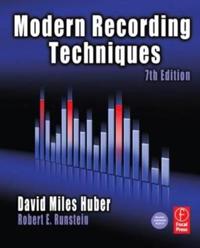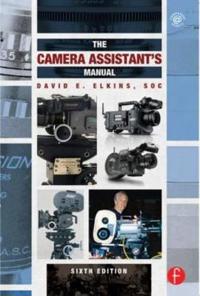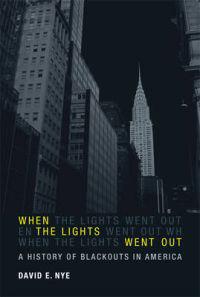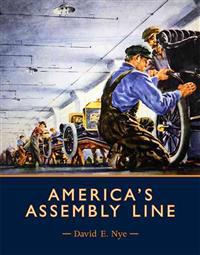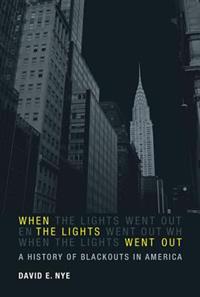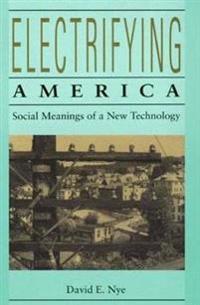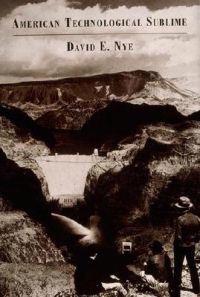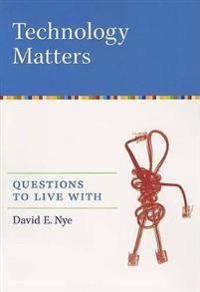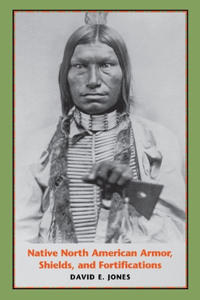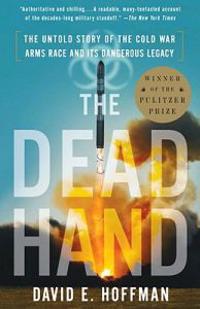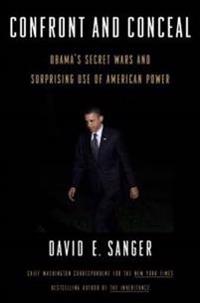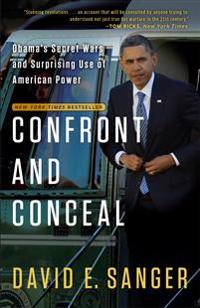Modern Recording Techniques (Häftad)
avDavid Miles Huber, Robert E. Runstein
ISBN: 9780240810690 - UTGIVEN: 200909We have entered an exciting age in audio production. Conventional limitations in recording have subsided or vanished entirely, making it possible to create and record your own music in ways that few ever dreamed possible. This expanded, up-to-date edition of Modern Recording Techniques can help guid[...]
The Camera Assistant's Manual (Häftad)
avDavid E. Elkins
ISBN: 9780240818689 - UTGIVEN: 201303Excel as an Assistant Cameraman (AC) in today's evolving film industry with this updated classic. Learn what to do-and what NOT to do-during production and get the job done right the first time. The Camera Assistant's Manual, Sixth Edition covers the basics of cinematography and provides you with th[...]
When the Lights Went Out (Inbunden)
avDavid E. Nye
ISBN: 9780262013741 - UTGIVEN: 201003Where were you when the lights went out? At home during a thunderstorm? During the Great Northeastern Blackout of 1965? In California when rolling blackouts hit in 2000? In 2003, when a cascading power failure left fifty million people without electricity? We often remember vividly our time in the d[...]
America's Assembly Line (Inbunden)
avDavid E. Nye
ISBN: 9780262018715 - UTGIVEN: 201303The assembly line was invented in 1913 and has been in continuous operation ever since. It is the most familiar form of mass production. Both praised as a boon to workers and condemned for exploiting them, it has been celebrated and satirized. (We can still picture Chaplin's little tramp trying to k[...]
Human Robotics: Neuromechanics and Motor Control (Inbunden)
avBurdet, Etienne, Franklin, David W, Milner, Theodore E
ISBN: 9780262019538 - UTGIVEN: 2013-09-20Wednesday is Indigo Blue (Häftad)
avRichard E. Cytowic, David M. Eagleman
ISBN: 9780262516709 - UTGIVEN: 201112A person with synesthesia might feel the flavor of food on her fingertips, sense the letter "J" as shimmering magenta or the number "5" as emerald green, hear and taste her husband's voice as buttery golden brown. Synesthetes rarely talk about their peculiar sensory gift--believing either that every[...]
Inventing Modern America: From the Microwave to the Mouse (Övrig)
avDavid E. Brown
ISBN: 9780262523493 - UTGIVEN: 2003-04-04Inventing Modern America profiles thirty-five inventors who exemplify the rich technological creativity of the United States over the past century. The range of their contributions is broad. They have helped transform our homes, our healthcare, our work, our environment, and the way we travel and co[...]
When the Lights Went Out (Pocket)
avDavid E. Nye
ISBN: 9780262525077 - UTGIVEN: 2013-09Where were you when the lights went out? At home during a thunderstorm? During the Great Northeastern Blackout of 1965? In California when rolling blackouts hit in 2000? In 2003, when a cascading power failure left fifty million people without electricity? We often remember vividly our time in the d[...]
Parallel Distributed Processing: Explorations in the Microstructure of Cognition: v. 2: Psychological and Biological Models (Övrig)
avDavid E. Rumelhart, James L. Mcclelland, The Pdp Research Group
ISBN: 9780262631105 - UTGIVEN: 1986-01-01What makes people smarter than computers? These volumes by a pioneering neurocomputing group suggest that the answer lies in the massively parallel architecture of the human mind. They describe a new theory of cognition called connectionism that is challenging the idea of symbolic computation that h[...]
Explorations in Parallel Distributed Processing: A Handbook of Models, Programs, and Exercises: Macintosh Version (Pocket)
avJames L. Mcclelland, David E. Rumelhart
ISBN: 9780262631297 - UTGIVEN: 1990-03-14Electrifying America (Häftad)
avDavid E. Nye
ISBN: 9780262640305 - UTGIVEN: 199209How did electricity enter everyday life in America? Using Muncie, Indiana - the Lynds' now iconic Middletown - as a touchstone, David Nye explores how electricity seeped into and redefined American culture. With an eye for telling details from archival sources and a broad understanding of cultural a[...]
American Technological Sublime (Häftad)
avDavid E. Nye
ISBN: 9780262640343 - UTGIVEN: 199605Technology has long played a central role in the formation of Americans' sense of selfhood. From the first canal systems through the moon landing, Americans have, for better or worse, derived unity from the common feeling of awe inspired by large-scale applications of technological prowess. American[...]
Consuming Power: A Social History of American Energies (Pocket)
avDavid E. Nye
ISBN: 9780262640381 - UTGIVEN: 1999-03-31America as Second Creation: Technology and Narratives of New Beginnings (Övrig)
avDavid E. Nye
ISBN: 9780262640596 - UTGIVEN: 2004-10-15After 1776, the former American colonies began to reimagine themselves as a unified, self-created community. Technologies had an important role in the resulting national narratives, and a few technologies assumed particular prominence. Among these were the axe, the mill, the canal, the railroad, and[...]
Technology Matters (Häftad)
avDavid E. Nye
ISBN: 9780262640671 - UTGIVEN: 200710Looks at ten central questions concerning humankind's relationship to technology, including "Does technology shape us, or do we shape it?" and "Are we using modern technology to create cultural uniformity or diversity?" Reprint.[...]
Parallel Distributed Processing: Explorations in the Microstructure of Cognition: v. 1: Foundations (Övrig)
avDavid E. Rumelhart, James L. Mcclelland, The Pdp Research Group
ISBN: 9780262680530 - UTGIVEN: 1986-01-01What makes people smarter than computers? These volumes by a pioneering neurocomputing group suggest that the answer lies in the massively parallel architecture of the human mind. They describe a new theory of cognition called connectionism that is challenging the idea of symbolic computation that h[...]
Native North American Armor, Shields, and Fortifications (Häftad)
avDavid E. Jones
ISBN: 9780292701700 - UTGIVEN: 2004-05From the Chickasaw fighting the Choctaw in the Southeast to the Sioux battling the Cheyenne on the Great Plains, warfare was endemic among the North American Indians when Europeans first arrived on this continent. An impressive array of offensive weaponry and battle tactics gave rise to an equally i[...]
Tribes, Treaties, and Constitutional Tribulations (Pocket)
avWilkins, David E., Deloria, Vine
ISBN: 9780292716087Two prominent scholars of American Indian law and politics undertake a full historical examination of the relationship between Indians and the United States Constitution that explains the present state of confusion and inconsistent application in U.S. Indian law.[...]
Poison Arrows (Häftad)
avDavid E. Jones
ISBN: 9780292722293 - UTGIVEN: 2007-02Biological warfare is a menacing twenty-first-century issue, but its origins extend to antiquity. While the recorded use of toxins in warfare in some ancient populations is rarely disputed (the use of arsenical smoke in China, which dates to at least 1000 BC, for example) the use of "poison arrows" [...]
Battleground Berlin (Pocket)
avDavid E. Murphy, Sergei A. Kondrashev, George Bailey
ISBN: 9780300078718 - UTGIVEN: 1999-04This book is the definitive insiders' account of the espionage warfare in Berlin from 1945 to the construction of the Berlin Wall in 1961. In an unprecedented collaboration, CIA and KGB intelligence veterans reveal previously untold stories of the Berlin tunnel, critical moments of the Berlin crisis[...]
Hollow Justice: A History of Indigenous Claims in the United States (Inbunden)
avDavid E. Wilkins
ISBN: 9780300119268 - UTGIVEN: 2013-11-01Vauxhall Gardens (Inbunden)
avDavid E. Coke, Alan Borg
ISBN: 9780300173826 - UTGIVEN: 2011-06-07From their early beginnings in the Restoration until the final closure in Queen Victoria's reign, Vauxhall Gardens developed from a rural tavern and place of assignation into a dream-world. This title reveals how Vauxhall linked high and popular culture in ways that look forward to the manner in whi[...]
The Dead Hand: The Untold Story of the Cold War Arms Race and Its Dangerous Legacy (Häftad)
avDavid E. Hoffman
ISBN: 9780307387844 - UTGIVEN: 201008

